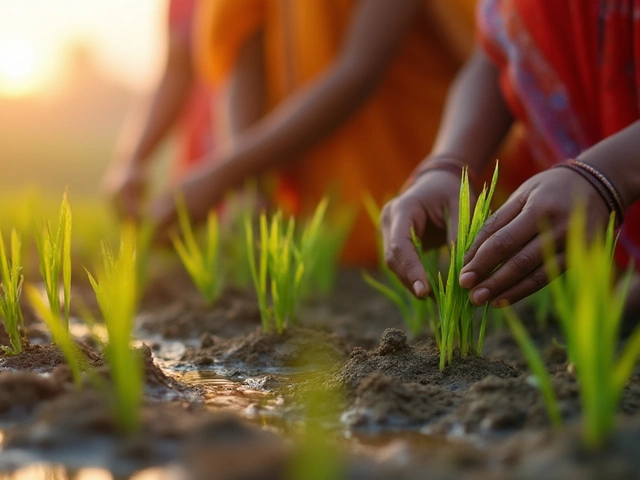Agriculture Business Tips for Indian Farmers
If you want your farm to earn more while you work less, you need straight‑forward tips you can use right away. Below are clear actions that cut costs, improve yields, and help you sell at the right price. No jargon, just things that work on Indian soil.
Cutting Costs and Raising Yields
Start with water. Drip irrigation saves up to 50% of water compared to flood methods, but many think it’s too pricey. Choose the right drip line depth (about 10‑15 cm for most crops) and use surface drip for the first season to keep the bill low. A simple check of line burial depth can avoid leaks and uneven watering.
Next, look at soil health. Heavy, compacted soil suffocates roots. Add a handful of compost or sand to each square foot and you’ll see softer soil in weeks. This cheap amendment improves drainage and lets plants breathe, which means bigger harvests.
Pick crops that match your region’s climate and market demand. For example, broccoli farming in North India can fetch high prices in winter if you follow proper spacing and pest control. The profit margin jumps when you avoid over‑planting and harvest at the right size.
Don’t forget pest management. Natural solutions like neem oil or companion planting (sister plants) can replace expensive chemicals. Plant marigolds next to tomatoes to repel nematodes, and you’ll save money while keeping the produce safe for consumers.
Finding the Right Market
Knowing the market is half the battle. Rice farmers often lose money because they sell at the peak of a price dip. Track local grain prices and store a small portion of your crop for a better selling window. This simple timing trick can add 10‑15% to your income.
If you grow vegetables, explore direct‑to‑consumer sales. Supplying fresh broccoli or other high‑value veg to local grocery stores or farmer‑markets cuts the middleman’s cut. A small investment in clean packaging can boost the price you get.
Use data from nearby farms. Talk to local agri‑consultants or join online groups where growers share real‑time market trends. When most farmers are unaware of a price surge for a particular crop, you can capture that profit.
Finally, keep an eye on risk. Weather swings and pest outbreaks can wipe out earnings. Diversify by planting a mix of cereals, pulses, and cash crops. If rice fails, your beans or millets can still bring in cash.
These agriculture business tips are easy to start today. Adjust water use, improve soil, pick the right crops, and sell smart. Follow them and you’ll see your farm’s bottom line improve without massive investments.

Which Vegetable Farming is Profitable in India? Your Practical Guide
Wondering which vegetable farming pays off in India? This article breaks down the most profitable vegetables, explains what makes them a smart choice, and shares tips from real farmers who’ve seen success. You’ll discover market trends, risks, and quick tricks to boost earnings. Whether you have one acre or ten, you’ll find ideas here to help you start, scale, or rethink your farming strategy. Get ready to turn your kitchen garden—or big farm—into a cash crop powerhouse.
About
Vegetable Gardening
Latest Posts


Why Is Drip Irrigation So Expensive? Breaking Down the Real Costs and Saving Tips
By Alden Thorne Jul 22, 2025

How Deep to Plant Rice: Best Depths, Mistakes, and Expert Tips
By Alden Thorne Jul 11, 2025

Best Months for Flower Blooming in India: Flower Seasons & Tips
By Alden Thorne Jul 27, 2025
